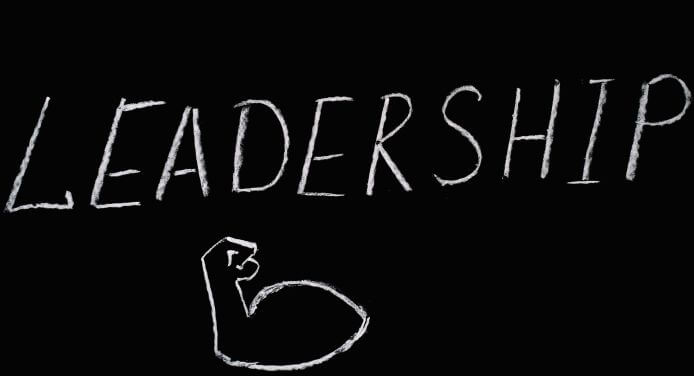Last updated on February 25th, 2025 at 03:04 pm
In an ideal situation where there is balance everything is working right and our security into the future is guaranteed, we won’t need leadership.
It thrives because something needs to be right. This is the basis for which leaders are valuable – to tackle challenges and leadership failures and create as much as possible a perfect situation with minimal flaws.
Our basic opinion of being a leader usually hinges on certain people we see as leaders and in the silence of our mind, we ask: what is it about these people that makes them leaders?
Recommended: How to Build Impact for Enduring Legacy
Key Takeaways
- Leadership is about inspiring, motivating, and guiding others to achieve common goals, with a focus on getting the work done
- Leadership, authority, and management are separate concepts
- Four main types of leadership include visionary, strategic, transformational, and servant leaders
- Qualities of a good leader include self-awareness, emotional intelligence, credibility, relationship building, bias for action, humility, team empowerment, authenticity, consistency, and role modeling
Credit: TEDx Talks
Table of Contents
- Key Takeaways
- What is leadership?
- Leadership vs authority vs management
- What are the 4 types of leadership?
- What are the qualities of a good leader?
- What are the ways to develop leadership skills?
- What are the challenges facing leadership?
- Frequently Asked Questions
- Conclusion
What is leadership?

Leadership is the ability to inspire, motivate, and guide others towards the achievement of common goals.
Many people, including those who teach leaders, make the mistake of thinking that personal abilities, tools, or the position of authority are the essence of leading.
So, they define it as anchoring on the powers and influence, the persuasion, the force behind such positions and set of tools rather than the challenges, and the work to be done.
According to Ronald Heifetz, founder of the Centre for Public Leadership at Harvard Kennedy School, before leadership can be defined and grasped, the tools with which it performs must be separated from the work to be done.
Check out the 7 books of leadership every leader should read.
The work to be done
Let’s say you are a mechanic who fixes cars and you have your hands, wrenches (spanners), pliers, and other tools.
We are going to separate your hands and the tools from the work to be done which is fixing the car and getting it to move.
A lawyer who knows nothing about fixing cars can have these tools and still not fix the car.
Related: Quiet Leader: The Power Of Being Leading Silently
The reason why the concept of being a leader hinges on the work to be done, and the challenges to be solved is that if we focus only on the tools required, the expertise, or personal abilities, we would discover that these tools and abilities are not specific.
Many other times, people tend to describe the trait as having courage, tolerance, conflict management, listening skills,s and other qualities of humans.
Yes! These qualities are good and are required in everyday life, not just being a leader, this makes it once again non-specific.
Related: How to be a Leader in Relationships
Definition of leadership

Being a leader is having something to show for all the tools used in the process of getting something done.
The work and results define the craft. Getting the car to move defines the mechanic.
On the other hand, being a leader is forked, so a complex subject, but we will have to break it down post by post so we make it simple to assimilate.
It influences, motivates, and supervises toward achieving the desired result.
The work to be done, which is where leadership resides throws up another task which is identifying the work to be done, which is critical to being a leader.
Understanding the work to be done is dismantling the complexity and the variety of work that is the challenge of leaders.
Related: Referent Power For Effective Followership
Leadership vs authority vs management
Leadership, authority, and management are three concepts that are often used interchangeably, but they are not the same.
Leadership: Getting the work done and getting the desired result with the tools available through a process of mobilizing and influencing other people to accomplish a goal.
Authority: On the other hand, authority has to do with permission given to an individual to exercise power.
This power can be formalized by a government or an institution. Authority is usually associated with individuals who have a good level of knowledge and expertise in a particular field and are perceived to have the legitimate power to make decisions and enforce rules in that area.
Management: Management has different objectives and skill sets even though it can be disguised as being a leader and authority.
The task of management is mainly to provide direction. However, managers can be leaders and vice versa but they all require different approaches.
Suggested: The Right Way to Conduct a Meeting
What are the 4 types of leadership?

There are several different types of leaders and their roles can vary depending on the situation.
Generally, there are four main types of leaders:
Visionary Leaders: These leaders have a clear vision for the future and inspire others to follow them toward that goal. They have strong communication skills and can motivate people to work towards a common goal.
Strategic Leaders: These leaders focus on long-term planning and execution of strategies to achieve organizational objectives. They can think analytically and make decisions based on data and facts.
Transformational Leaders: These leaders focus on transforming the organization by motivating, inspiring, and empowering employees.
They create an environment where employees can reach their full potential and contribute to the success of the organization.
Servant Leaders: These leaders prioritize the needs of their team members over their own needs or those of the organization.
They strive to create an environment where everyone has a voice and is respected for their contributions.
Related: How to Be a Chairman in a Meeting
What are the qualities of a good leader?

1. Self-awareness
Self-knowledge is an important quality of effective leadership. It involves understanding one’s strengths, weaknesses, values, beliefs, motivations, and emotions and how they tie together to improve a person’s life.
Self-aware leaders can recognize their own biases and make decisions with objectivity.
Additionally, self-awareness enables leaders to adjust their behavior and communication style to better connect with others and create a more productive work environment.
2. Emotional intelligence
Emotional competence is a quality of being a leader that involves the ability to recognize, understand, and manage one’s own emotions, as well as the emotions of others.
Effective leaders with emotional intelligence can positively use their emotions to connect with their team members, inspire and motivate them, and build strong relationships.
3. Credibility
According to the works of James M. Kouzes and Barry Z. Posner, credibility is one of the most important traits of good leadership.
Related: Democratic Leading Style: The Key To Team Empowerment
Credibility is a quality of being a leader that inspires trust and confidence from followers. It is based on the leader’s character, integrity, and competence.
A credible leader is seen as honest and reliable, with the ability to make sound decisions and take effective action.
Credibility also involves having a clear vision for the future and being able to communicate it effectively. Ultimately, it is about gaining the respect of those who follow you.
According to Gallup, employees who distrust their leaders are more prone to quit their jobs than those whose leaders are trustworthy. This makes credibility stand out among the qualities of being a leader.
4. Relationship building
Being a leader is a process of developing relationships between individuals and groups.
Leaders must be able to create strong connections with their followers, build trust, and foster collaboration to effectively lead their teams.
The ability to build relationships is essential for any leader as it allows them to understand their team’s needs and challenges, provide guidance, and motivate them toward success.
Related: The Power of Referent: Master The Invisible Power Of Personality
5. Good leaders have a bias for action
A leader can have a bias for action when they are quick to make decisions without considering all the potential outcomes or implications.
This type of bias can lead to hasty decisions that may not be in the best interest of the organization and can cause unintended consequences.
Leaders should strive to be mindful of their biases and take a more methodical approach to decision-making to ensure that their decisions are well thought out and beneficial for all involved.
6. Good leaders show humility
Humility is a quality that involves having a modest and unpretentious view of one’s abilities, achievements, and status. Humble leaders recognize that they don’t have all the answers and are open to learning from others.
They also understand that being a leader is a collaborative effort and seek to create an environment where everyone can contribute their unique perspectives and ideas.
Recommended: Life Skills That Should Be Taught in Schools
7. Team empowerment
Empowering a team requires a leader who is willing to invest time, energy, and resources to develop their team’s skills and provide a supportive work environment.
By following these strategies, leaders can create an empowered team that is motivated, engaged, and committed to achieving its goals.
8. Authenticity
Authentic leadership is a style that emphasizes transparency, honesty, and a commitment to ethical values.
An authentic leader is self-aware, demonstrates high moral standards, and builds trust with their followers.
Authentic leaders are genuine, and they lead by example, which inspires their followers to emulate their behavior and values.
Related: Loosening The Reins: A Deep Dive Into Laissez-Faire Leading Style
9. Consistency
Consistency is a crucial quality of being a leader that refers to a leader’s ability to demonstrate consistency in their behavior, decision-making, and communication.
Consistent leaders create a predictable work environment that promotes stability and trust among their followers.
10. Role models
Role modeling is a leadership quality that refers to a leader’s ability to lead by example and set the tone for their followers. A leader who is a good role model inspires their followers to emulate their behavior, work ethic, and values.
11. Intuitive
Intuitive qualities help a leader to make decisions based on instinct or gut feelings, rather than relying solely on rational or logical analysis.
While intuition is sometimes dismissed as being unreliable or unscientific, many successful leaders attribute their success to their ability to trust their intuition.
12. Self-reliant
According to Ralph Wald Emerson’s self-reliance, effective leaders are self-reliant. A self-reliant leader trusts their judgment, takes initiative, and remains resilient.
They inspire confidence, make independent decisions, and adapt to challenges without excessive reliance on external validation or approval.
Related: The Duties of a Secretary in Conducting a Meeting
What are the ways to develop leadership skills?

Developing the qualities of a good leader is a process that takes time and effort, and it involves a combination of personal and professional development.
Here are some ways to develop them:
Learn from others: Seek out mentors and leaders you admire and learn from their experiences. Take note of their leadership styles, decision-making processes, and communication techniques.
Read books on leadership: There are numerous books on how to be a leader that provides valuable insights into honing these qualities and techniques. Reading books on the concept can help you expand your knowledge and develop your skills.
Attend leadership training: Attend training sessions for leaders or seminars that are designed to enhance your skills. These programs often cover a range of topics such as communication, decision-making, and team-building.
Also Read: Autocratic Leading Style: Pros And Cons
Take on new challenges: Taking on new challenges can help you develop your leadership skills. Take on projects that are outside of your comfort zone or lead teams that require you to use new skills.
Seek feedback: Seek feedback from colleagues, friends, and mentors on your performance as a leader and areas that need improvement. This can help you identify your strengths and weaknesses and develop an action plan for improvement.
Practice self-reflection: Regularly reflecting on your approach to being a leader and experiences can help you identify areas that need improvement. Take time to reflect on your successes and failures, and consider how to improve your skills.
By continually developing your skills, you can become a more effective leader and make a positive impact in your organization and community.
Related: How to Build a Leadership Legacy
What are the challenges facing leadership?
Being a leader faces several challenges in today’s complex and rapidly changing world. Here are some of the key challenges facing it:
Managing change: Leaders need to be adept at managing change and adapting to new situations.
With technological advancements and globalization, the business environment is constantly evolving, and leaders need to be able to pivot and make strategic decisions quickly.
Developing diverse teams: Leaders need to develop diverse teams that can bring different perspectives and ideas to the table. This requires a commitment to inclusivity and a willingness to engage with people from diverse backgrounds.
Creating a positive culture: Leaders need to create a positive work culture that promotes collaboration, innovation, and growth. This involves building relationships, setting clear expectations, and providing feedback and recognition.
Developing future leaders: Leaders need to focus on developing the next generation of leaders. This requires investing in training for people interested in becoming leaders and mentoring programs that provide opportunities for growth and development.
Navigating ethical challenges: Leaders face ethical challenges regularly, such as balancing profitability with social responsibility or making difficult decisions that impact stakeholders.
Leaders need to have a strong moral compass and be able to make tough decisions while maintaining their integrity.
Managing work-life balance: Leaders need to set an example for their team by demonstrating a healthy work-life balance.
This involves managing their workload while supporting their team members to avoid burnout and promote well-being.
Effective leaders need to be able to address these challenges and find solutions that work for their organization and team.
Frequently Asked Questions
What is the definition of leadership?
Leadership is the ability to inspire, guide, and influence others towards a common goal, often involving effective decision-making and communication skills.
What are the best definitions of leadership?
The best definitions of leadership emphasize the ability to motivate, empower, and guide individuals or groups towards achieving shared objectives.
What leadership really means?
Leadership entails inspiring and guiding others, fostering collaboration, and making impactful decisions to achieve collective goals and drive positive change.
What are the 4 types of leadership?
The four types of leadership include autocratic, democratic, laissez-faire, and transformational, each with distinct approaches to decision-making and team engagement.
Conclusion
Leadership is an institution on its own with many definitions according to how the observer perceives it.
The result is what defines leadership, getting the work for which it is instituted done.
There is no leading if a leader does not get the work done.
The different styles leaders employ are experienced in many situations and get their work done in their own ways.
Aspiring leaders and leaders who want to improve can always do so by being deliberate and knowing exactly what they want.
Thank you for reading.
Citations:
- https://blogs.illinois.edu/view/8605/808017
- https://www.sagepub.com/sites/default/files/upm-binaries/33554_Chapter1.pdf
- https://www.linkedin.com/pulse/leadership-1000-words-nick-o-sullivan-mbe
- https://ghostblogwriters.com/an-example-of-a-great-blog-post-2000-words/
- Qualities Of A Good Leader
- Skills of Leaders
Pious Clements is the insightful voice behind "The Conducts of Life" blog, where he writes about life ethics, self-development, life mastery, and the dynamics of people and society.
With a profound understanding of human behaviuor and societal dynamics, Pious offers thought-provoking perspectives on ethical living and personal growth.
Through engaging narratives and astute observations, he inspires readers to navigate life's complexities with wisdom and integrity, encouraging a deeper understanding of the human experience and our place within society.

